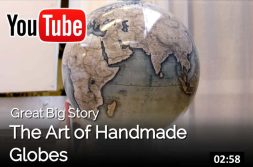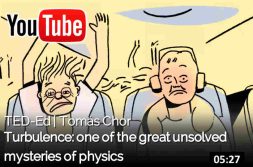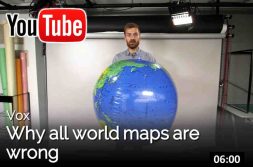Travel
Questions
1. Do you like travelling?
2. What’s the best place you’ve ever been to?
3. Where do you want to travel to before you die?
4. Can travel be an education?
5. Would you like to travel in space or to the moon?
6. Would you like to go travelling for a few years non-stop?
7. What different kinds of travelling are there?
8. What are the good and bad things about travelling?
Videos
While waiting to board his plane, a man discovers that he’s not as much of a VIP as he thinks he is.
Category: Geography & Travel
In Alaska’s Denali National Park, you’ll find six million acres of sprawling forests, majestic mountains, active glaciers and flowing rivers. In the midst of this vast natural beauty, around two million acres of federally protected
[more]
wilderness exists. Here motorized transport is prohibited. So how does one get around in the winter? Enter the Denali dogs. Denali is the country’s only national park with a working sled dog kennel. Let’s go meet the hard-working huskies!
[less]
Category: Geography & Travel |
Nature & Environment
When Peter Bellerby couldn’t find the perfect handmade globe for his father’s 80th birthday, he took matters into his own hands. He spent the next few years learning and perfecting the lost art of globemaking, which turned
[more]
out to be a difficult, detailed process. Today, he runs Bellerby & Co Globemakers out of a small London studio with a team of 15 skilled craftsmen who create every masterpiece by hand.
[less]
Category: Art | Geography & Travel
The Chinese New Year is the world’s single biggest human migration of people: over 200 million travel to celebrate with family – many of them on the country’s advanced bullet train network.
Category: Geography & Travel
What is turbulence and why does it happen? Explore the phenomenon that has perplexed physicists for over a century.
You’re on an airplane when you feel a sudden jolt. Outside your window nothing seems to be happening, yet the plane continues to rattle you and your fellow passengers as it passes through turbulent air in the atmosphere. What exactly is turbulence, and why does it happen? Tomás Chor dives into one of the prevailing mysteries of physics: the complex phenomenon of turbulence.
Lesson by Tomás Chor, directed by Biljana Labovic.
[more]
You’re on an airplane when you feel a sudden jolt. Outside your window nothing seems to be happening, yet the plane continues to rattle you and your fellow passengers as it passes through turbulent air in the atmosphere. What exactly is turbulence, and why does it happen? Tomás Chor dives into one of the prevailing mysteries of physics: the complex phenomenon of turbulence.
Lesson by Tomás Chor, directed by Biljana Labovic.
[less]
Category: Geography & Travel | Science
Making accurate world maps is mathematically impossible.
Maps are flat representations of our spherical planet. Johnny Harris cut open a plastic globe to understand
Maps are flat representations of our spherical planet. Johnny Harris cut open a plastic globe to understand
[more]
just what it takes to turn a sphere into something flat.
His struggle to make a flat map out of the plastic globe is indicative of a challenge mapmakers have faced for centuries: It is mathematically impossible to translate the surface of a sphere onto a plane without some form of distortion.
To solve this problem, mathematicians and cartographers have developed a huge library of representations of the globe, each distorting a certain attribute and preserving others.
For instance, the Mercator projection preserves the shape of countries while distorting the size, especially near the north and south pole.
For a more accurate view of land area look at the Gall-Peters projection, which preserves area while distorting shape.
In the end, there’s not “right” map projection. Each comes with trade-offs, and cartographers make projection decisions based on the particular tasks at hand. But if you are interested in seeing an accurate depiction of the planet, it’s best to stick with a globe.
His struggle to make a flat map out of the plastic globe is indicative of a challenge mapmakers have faced for centuries: It is mathematically impossible to translate the surface of a sphere onto a plane without some form of distortion.
To solve this problem, mathematicians and cartographers have developed a huge library of representations of the globe, each distorting a certain attribute and preserving others.
For instance, the Mercator projection preserves the shape of countries while distorting the size, especially near the north and south pole.
For a more accurate view of land area look at the Gall-Peters projection, which preserves area while distorting shape.
In the end, there’s not “right” map projection. Each comes with trade-offs, and cartographers make projection decisions based on the particular tasks at hand. But if you are interested in seeing an accurate depiction of the planet, it’s best to stick with a globe.
[less]
Category: Geography & Travel





